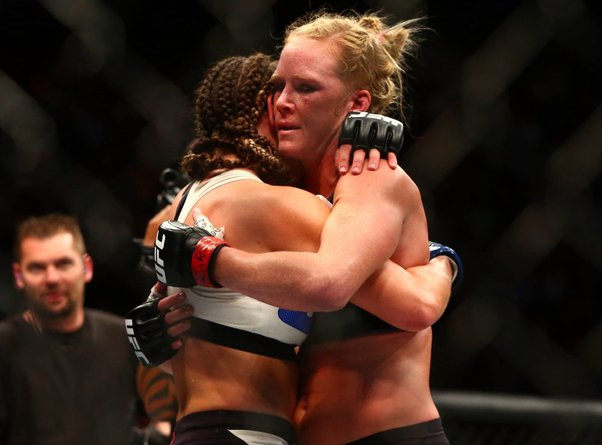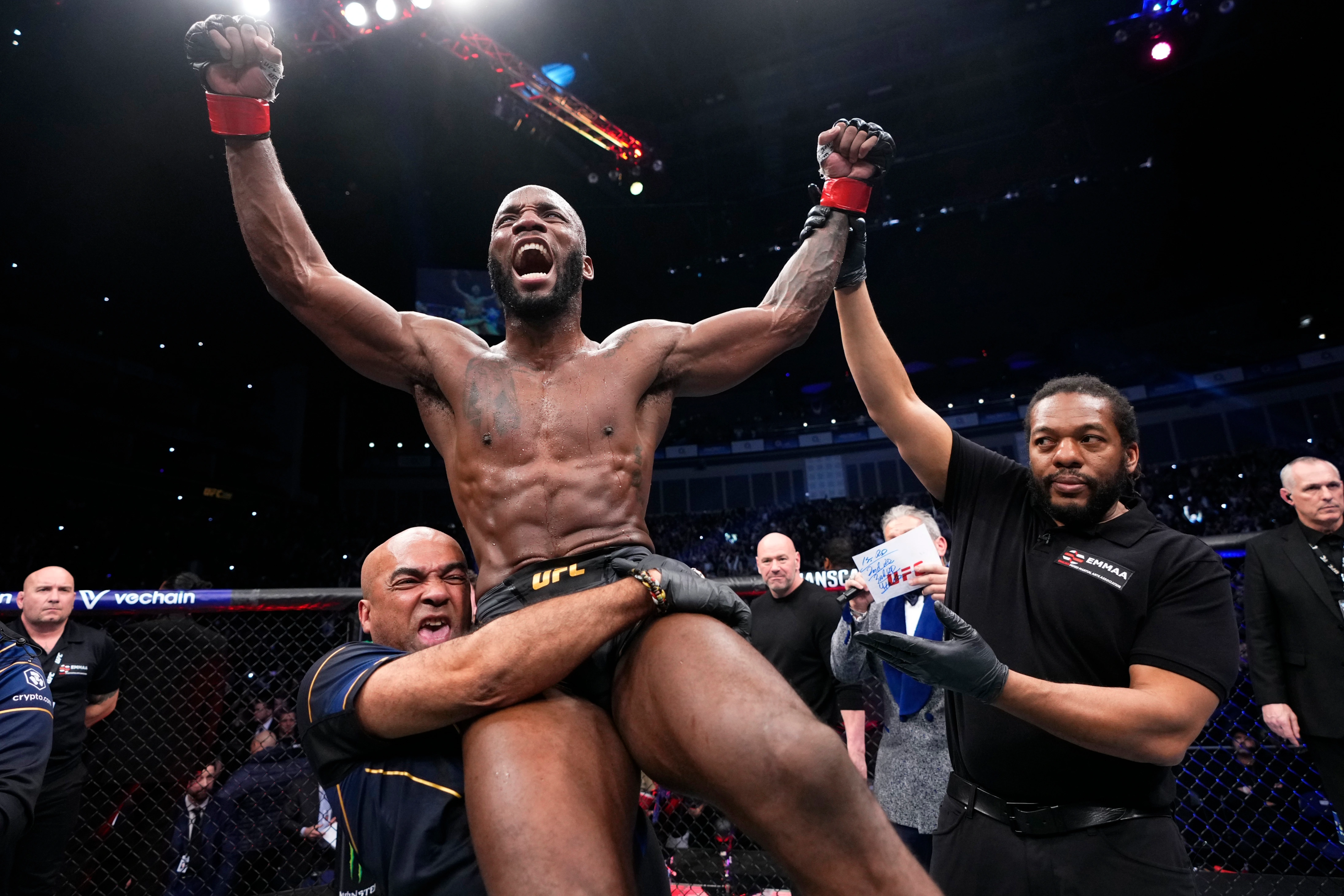Table of Contents

Cameron
The UFC is one of the fastest-growing sports organizations in the world at this time wth no real signs of slowing down. Some of the most exciting times come when we are spending time with friends watching our two favorite fighters go at it in combat. if you are anything like me, I always end up forgetting the weight classes that people fight in or at least how much they are allowed to weigh. In this article, we go over the weight classes in the UFC for both men and women.
Stake.us social casino has been tailor-made to provide the ultimate social, safe, and free gaming experience. With a wide variety of over 200 industry favorite games by the most reputable providers, you won’t find better action anywhere else.
UFC Men’s Weight Classes in LBs and KG
The eight UFC weight classes for men are:
-
-
Heavyweight Division – 205 lb (93 kg) to 265 lb (120 kg)
-
-
-
Light Heavyweight Division – 185 lb (83.9 kg) to 205 lb (93 kg)
-
-
-
Middleweight Division – 170 lb (77.1 kg) to 185 lb (83.9 kg)
-
-
-
Welterweight Division – 155 lb (70.3 kg) to 170 lb (77.1 kg)
-
-
-
Lightweight Division – 145 lb (65.8 kg) to 155 lb (70.3 kg)
-
-
-
Men’s Featherweight Division – 135 lb (61.2 kg) to 145 lb (65.8 kg)
-
-
-
Men’s Bantamweight Division – 125 lb (56.7 kg) to 135 lb (61.2 kg)
-
-
-
Men’s Flyweight Division – 115 lb (52.2 kg) to 125 lb (56.7kg)
-
UFC Men’s Weight Classes (Divisions)
The men’s UFC weight divisions aren’t as old as the company itself. Four years after the company’s launch, we’d see two weight classes in UFC for the safety of its fighters – above and below 99 kg. Later, with the introduction of the Unified Rules of Mixed Martial Arts in 2000, the company increased the number of weight divisions.
We now had the lightweight, welterweight, middleweight, light heavyweight, and heavyweight UFC weight divisions. The UFC lightweight division has seen the most promotion in recent years. Its early days saw it being ruled by the likes of legendary UFC fighters BJ Penn and Frankie Edgar.
Later on, we saw it become the hottest division in the late 2010s partly because it was stacked with elite fighters with exciting fighting styles and because Conor McGregor moved up to claim the lightweight title. The “Notorious” one’s battle with Khabib Nurmagomedov made UFC 229 the highest-grossing PPV in the sport.

Welterweight has seen its golden years dominated by the legendary Matt Hughes and Georges St-Pierre. In more recent years, Kamaru Usman (first African UFC fighter to hold a belt) commanded the welterweight division.
Moving up, we have middleweight which was synonymous with the “Spider” himself – Anderson Silva. He fought circles around his opponents for a whopping six years. Current middleweight champion Israel Adesanya succeeded Silva and has done an even better job against tougher opponents.
Light-heavyweight has always been a tough weight division filled with monsters. Chuck Liddell used to reign supreme over this weight class. Daniel Cormier has also been superb in modern times. However, the GOAT Jon Jones has always been considered to be the antichrist of the division.
Technically, the UFC’s heavyweight division contains the toughest men in the world. We’ve seen several UFC pioneers and legendary names such as Randy Couture, Brock Lesnar, and Cain Velasquez hold its title. But “Stone Cold” Stipe Miocic is considered to be the best ever to rule this weight class though.
In 2010, the UFC launched the men’s bantamweight and featherweight weight divisions. The former has seen spectacular title reigns from notable fighters such as Dominick Cruz and TJ Dillashaw. Cody Garbrandt also shook things up with his beautiful victory over Cruz.
Meanwhile, the featherweight division was the kingdom of Jose Aldo for many years. He was eventually beaten by a rising Conor McGregor. After he moved on, MMA fighters Max Holloway and Alexander Volkanovski, have battled for this UFC weight class’s supremacy.
2012 saw the men’s flyweight class launched. “Mighty Mouse” Demetrious Johnson established himself as the kingpin of this division for many years, but was never given the promotion that he deserved and the weight class was continuously under threat of getting dropped.
However, his battles with and the eventual loss of his title to Olympic champion Henry Cejudo started to make flyweight one of the more interesting UFC weight divisions. The recent quadrilogy between Deiveson Figueredo and Brandon Moreno has also retained the fans’ interest in the weight class.
Stake.us social casino has been tailor-made to provide the ultimate social, safe, and free gaming experience. With a wide variety of over 200 industry favorite games by the most reputable providers, you won’t find better action anywhere else.
UFC Women’s Weight Classes in LBs and KG
The four UFC weight classes for women are:
-
-
Women’s Featherweight Division – 135 lb (61.2 kg) to 145 lb (65.8 kg)
-
-
-
Women’s Bantamweight Division – 125 lb (56.7 kg) to 135 lb (61.2 kg)
-
-
-
Women’s Flyweight Division – 115 lb (52.2 kg) to 125 lb (56.7 kg)
-
-
-
Strawweight Division – up to to 115 lb (52.2 kg)
-

UFC Women’s Weight Classes (Divisions)
The rising popularity of Ronda Rousey, Miesha Tate, and others, got women’s MMA to the UFC. In 2012, the first women’s division added to the UFC was the bantamweight division. The unstoppable Rousey was the first champion and star of the weight division for the first couple of years.
After Rousey was dethroned, the bantamweight division and its title would eventually land in the hands of Amanda Nunes. The “Lioness” has mostly ruled over bantamweight and featherweight (introduced in 2017). She has dominated the latter particularly due to the lack of fighters in it.
We’d see the strawweight division announced in 2013. The UFC brought in an influx of 115-lb female competitors; it wouldn’t take long for the class to fall under Joanna Jedrzejczyk’s dominance. She brought a lot of eyes to this weight division with her fighting and trash-talking skills.
Joanna’s long and illustrious reign of terror would eventually come to an end as the underdog Rose Namajunas took her belt. After that, the belt would change hands between her, veteran Carla Esparza, and Zhang Weilli. Weilli would ultimately control this UFC weight class.
In 2017, the women’s flyweight division was introduced and quickly taken over by the mighty Valentina Shevchenko. The veteran kickboxer has ruled the weight class for most of its tenure, outstriking every contender in front of her.
Venum Challenger MMA Gloves suit all categories of fighters, from beginners to professionals. With several layers of moldered foam padding, these gloves are durable and built to last.

The List Of UFC Weight Class Champions and Latest Changes
The following are all the female UFC champions with their title-fight history summed up:
UFC Womens Champs
-
-
Women’s Featherweight Champion – Amanda Nunes (won the belt from Cris Cyborg and has defended it two times)
-
-
-
Women’s Bantamweight Champion – Amanda Nunes (won back the belt from Julianna Pena; defended it five times before)
-
-
-
Women’s Flyweight Champion – Alexa Grasso (won the belt from Valentina Shevchenko)
-
-
-
Strawweight Champion – Zhang Weilli (won the belt from Carla Esparza)
-
The following are the male UFC champions with their title-defense history summed up:
UFC Mens Champs
-
-
Heavyweight Champion – Jon Jones (won the belt vacated by Francis Ngannou)
-
-
-
Light Heavyweight Champion – Alex Pereira (won the belt from Jiri Prochazka)
-
-
-
Middleweight Champion – Dricus Du Plessis (won the belt by beating Sean Strickland)
-
-
-
Welterweight Champion – Leon Edwards (won the belt from Kamaru Usman and has defended it once)
-
-
-
Lightweight Champion – Islam Makhachev (won the belt from Charles Oliveira and has defended it once)
-
-
-
Men’s Featherweight Champion – Ilia Topuria (Defeated Alexander Volkanovski February 17th, 2024)
-
-
-
Men’s Bantamweight Champion – Aljamain Sterling (won the belt from Petyr Yan)
-
-
-
Men’s Flyweight Champion – Alexandre Pantoja (won the belt from Brandon Moreno)
-
Stake.us social casino has been tailor-made to provide the ultimate social, safe, and free gaming experience. With a wide variety of over 200 industry favorite games by the most reputable providers, you won’t find better action anywhere else.

The UFC Weigh-In Policy and Rehydration Rules
Weigh-Ins
The UFC weight classes come with a pair of established weight limits for the fighters to follow. There are weigh-ins before each Ultimate Fighting Championship event that help the company enforce them. The first weigh-in is done in front of the state commissioner. The other (aka the ceremonial weigh-in) is done in front of the fans on stage.
The first one’s the real deal; those who exceed the upper weight limit (by more than 1 lb) are given two hours to try again. Should they fail a second time, they’ll be fined 30% of their purse – it will go to their opponent regardless of the outcome of the fight. Other than that, they won’t be eligible for the win bonus. These rules apply to non-title bouts.
In the case of a title match, UFC fighters aren’t allowed to weigh even half a pound above or under the upper and lower weight limits respectively. If they are unable to make weight, not only will they lose some of their purse, but the title will also be off the line.
In the case of non-title bouts, the matches can be contested at catchweight, provided that the culprit is five pounds heavier than the opponent. In that case, the rules relax enough to allow the other fighter to make the same weight. If the weight difference is more than five pounds, then the bout can be moved to the next division with the consent of both MMA fighters.
Rehydration in Mixed Martial Arts
It would be an understatement to say that fighters go through hell to make weight. This is because most of them don’t compete at their natural weight classes, or their walk-around weight. They do this to face smaller and lighter opponents to increase their chances of a W.
Hence both male and female competitors undergo extreme weight-cutting measures a day before the fight to appease the state commissioner and be eligible for their UFC weight divisions. Then they have approximately 34-36 hours to rehydrate themselves for the fight.
The UFC doesn’t have a strict rehydration policy for its athletes. You just cannot use artificial IV therapy to rehydrate yourself unless recommended by a doctor. So, fighters can resort to drinking a liter of water every hour, because it’s the max that their bodies can handle.

Stake.us social casino has been tailor-made to provide the ultimate social, safe, and free gaming experience. With a wide variety of over 200 industry favorite games by the most reputable providers, you won’t find better action anywhere else.
Frequently Asked Questions
What About Weight Cutting In The UFC?
Weight Cutting involves the fighters losing their water weight in order to fulfill the requirements of their respective UFC weight divisions. The fighters must make the maximum or minimum weight required, in front of the state commission, and then they can rehydrate.
What Happens if A UFC Fighter Misses Weight?
If a fighter missed weight, they’d be given two hours to try to make it. To make weight, they are allowed to take all of their clothes off. If it is not a title fight, they can be one pound over the upper weight limit; otherwise, they’ll lose some of their fight purse to their opponent. This will happen even if they win as a punishment for missing weight.
Who was the first champion in UFC history?
Ken Shamrock was the first-ever UFC champion. He was the inaugural Superfight Champion, i.e. an openweight champion since UFC weight classes didn’t exist back then. Note that Shamrock is the first to hold a UFC belt. If we talk about tournaments, then Royce Gracie is the first-ever tournament winner in UFC history.
Why does the UFC Heavyweight division have a weight limit?
The 265-pound weight limit of the heavyweight division exists so that fighters don’t become overweight and slow. Also, this is the requirement set by the state commission. In order to have fighters above this limit, the UFC is free to create a super-heavyweight class as seen in other combat sports.
Related Content
- Boxing, Grappling, MMA, Striking
- Boxing, MMA, Striking
- Boxing, MMA, Striking
Newsletter
Signup for news and special offers!
Thank you!
You have successfully joined our subscriber list.


